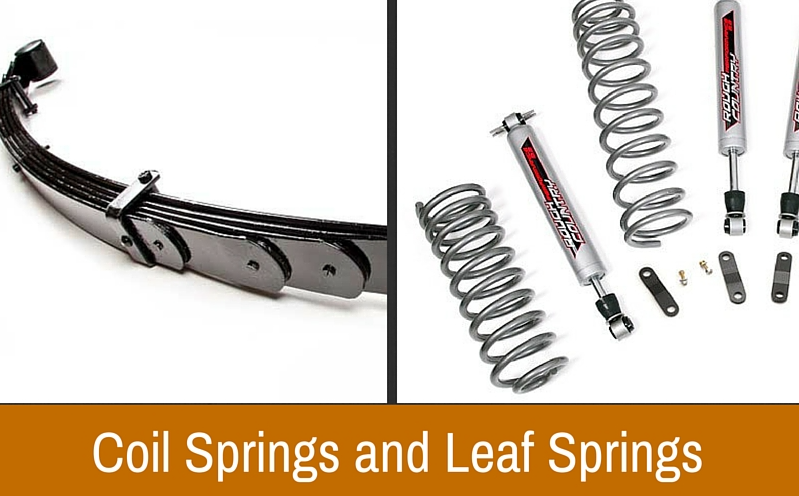
When you want to modify your Jeep's suspension, there are two basic kinds you have to deal with: coil spring and leaf spring suspensions. Not that you have a choice, you have to pretty much stick with what your Jeep came with from the assembly line. But the modifications needed to upgrade the two systems are different.
Let's start with the leaf springs, since that's the older style. Going all the way back to the first Jeeps, the military MBs and Willys had leaf springs suspenions, front and rear. That was the technology of the day. Leaf springs are pretty tough, and can usually handle more weight than a traditional coil spring. Leaf springs are still in use today on trucks, from small pickup trucks to giant cement trucks. Many of the light duty trucks have switched to coil springs in the front, so they drive and ride more like a car, but still use leaf springs in the rear to support heavy loads. It's not likely leaf springs will ever go away, but they aren't used as much as in the past.
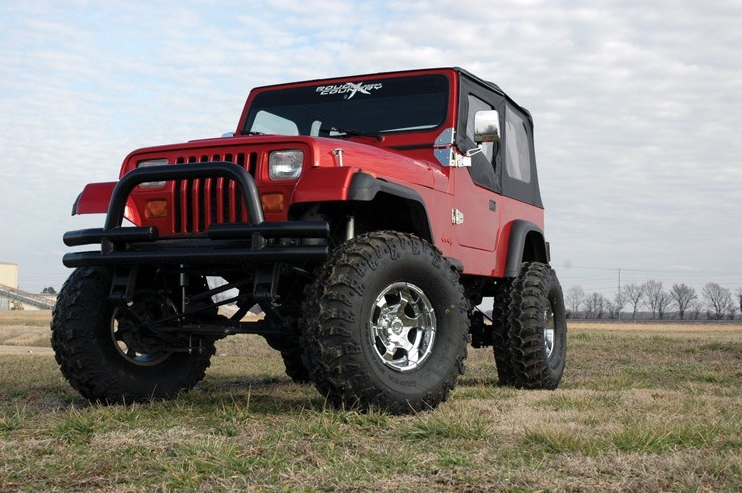
For a Jeep, leaf springs were used on the CJ-series on through to the YJ Jeeps. Some people like to refer to the YJ as the last "real" Jeep because it used leaf springs. While leaf springs are durable, they do need maintenance now and then. Leaf springs can lose their "arch," and begin to "sag." Meaning, the way they are bowed and shaped is the arch of the springs. In the old days, you would take a leaf spring apart, then re-arch each individual leaf. You would then assemble it with a new arch measurement. Typically you can put a set of springs on the ground, upside down, and then measure from the center bolt that holds them together. The spring sets on both sides of the axle have to have the same measurement, thus the same arch. You generally have to grease them too, if there are grease fittings at each end. The rubber bushings can wear out or rot over time, and urethane replacements are a popular choice for Jeeps. Luckily, today you can buy new leaf springs sets already arched the way you want. Whether it's stock, or arched (curved) for more lift. You can sometimes even get springs sets that have more individual leafs so the set will support more weight. For instance, if you're Jeep YJ leaf springs need to be replaced, you can get them stock from Omix (part 97565). You may also choose an upgraded Rugged Ridge Jeep suspension set with more lift in the rear. If you want to stay closer to stock leaf springs, but need more support in the rear to carry extra weight such as heavy camping gear, can use this Rancho suspension set.
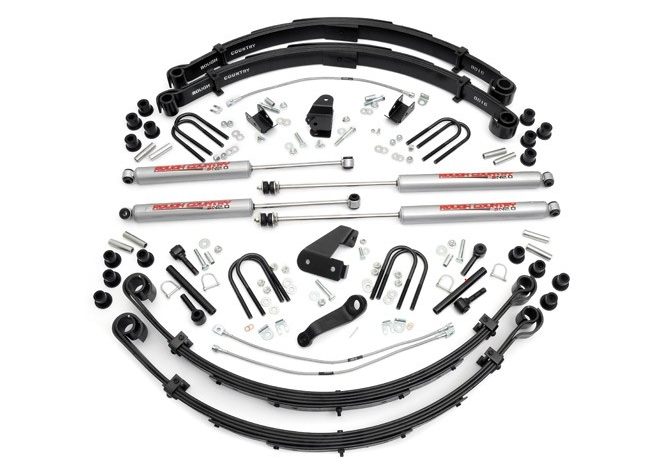
As you can see, you still get a good range of choices as to what you can do with your Jeep. Just because leaf springs are an older design doesn't mean they aren't any good. The thing about leaf springs is that they do tend to ride like a truck. So companies today try to use coil springs when possible, because, well, I guess drivers aren't as tough as they used to be and need to be pampered. It's hard to say. Note that other Jeeps use leaf springs also, from the older Cherokees, Commanche, Grand Wagoneers, and so on.
Starting with the TJ, the coil spring made it's debut on the Jeep Wranglers. Both front and rear suspensions use coil springs. Are coil spring suspensions better? That depends on the Jeep driver. You can tailgate that discussion around a camp fire for hours, but, suffice it to say, it's not likely Jeep will go back to leaf springs. Coil springs are nothing more than a coiled piece of metal bar stock. They are very inexpensive to the manufacturer. They are also easy to make in a wide variety of ways, whether it's a variable or constant design.
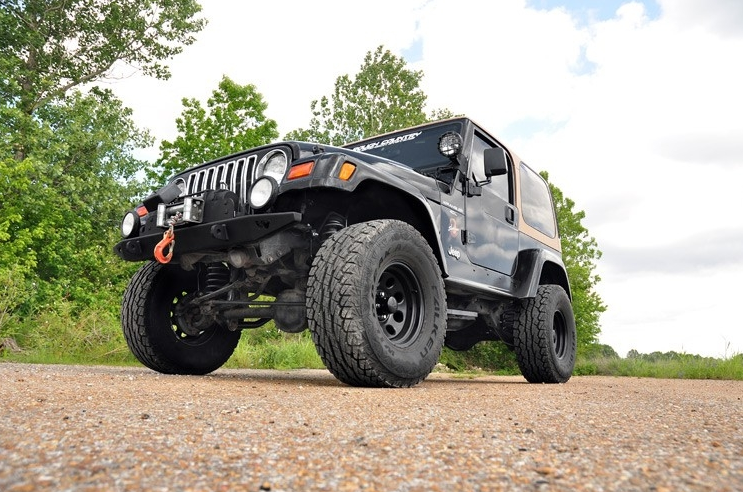
Fun Fact: variable rate coil springs mean that the coils at one end of the spring are spaced apart more than at the other end. Coil springs are often easy to replace. You might need a spring compressor tool, but on many vehicles, if you unload the rear suspension, they will fall right out on their own. So swapping a coil spring can be very easy compared to getting a leaf spring off. Because a coil spring can be made into almost any length, when it comes to a lift kit, you get more choices on the lift you might want to achieve. Lift kits with coil springs can range from a mere 1-inch to 4.5 inches. Again, springs are easily produced, in whatever length a company requires. With a coil spring, you can also use a "spacer" lift (like a SkyJacker SJ-TJ20 kit). Meaning, you only need to install a simple donut above or below the coil springs, and you can get an extra inch or two of lift. Something that's more involved to do with a leaf spring.
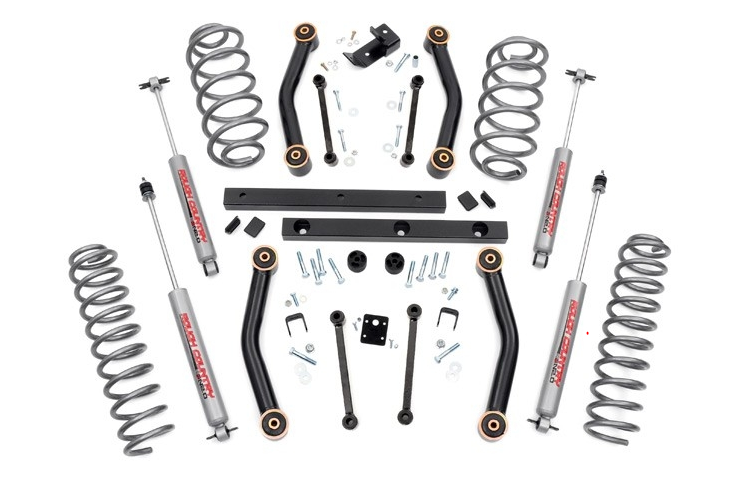
We carry many types. For instance, stock coil springs and heavy duty springs for when you're taking your Wrangler TJ model off-road. One thing about coil springs is they are a single item, with no moving parts, so there is no real maintenance to them. Once installed, you can leave them alone. Coil springs, much like leaf springs, can get weak over time, and sag. They can also develop cracks, or even break. But we carry a wide variety of them for most Jeeps, so it's not an issue if you need to upgrade the ones you have. Leaf spring and coil spring suspensions both do the same job, just in a different way.
Which type of suspension do you prefer on your Jeep? Leaf spring or coil spring?








